David Guy Brizan
MuSLCAT: Multi-Scale Multi-Level Convolutional Attention Transformer for Discriminative Music Modeling on Raw Waveforms
Apr 06, 2021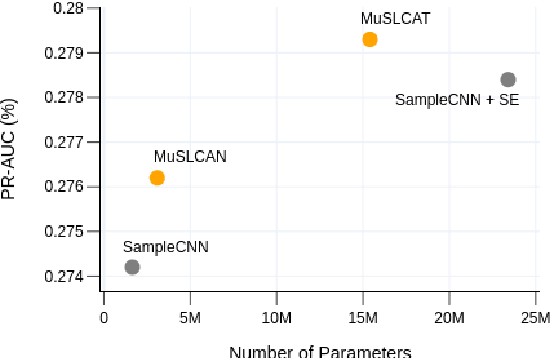
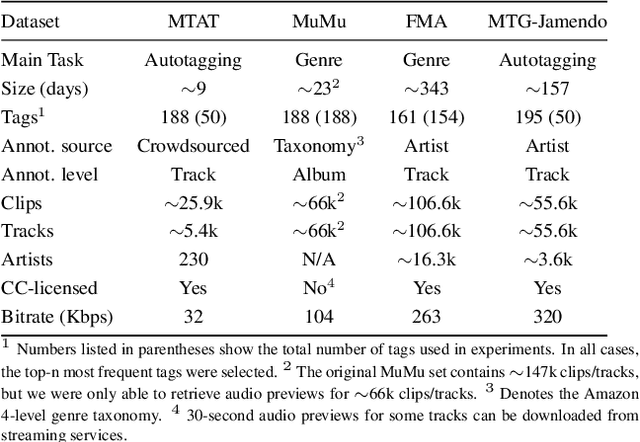
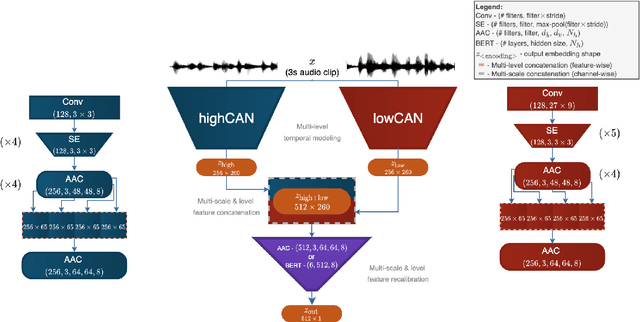

Abstract:In this work, we aim to improve the expressive capacity of waveform-based discriminative music networks by modeling both sequential (temporal) and hierarchical information in an efficient end-to-end architecture. We present MuSLCAT, or Multi-scale and Multi-level Convolutional Attention Transformer, a novel architecture for learning robust representations of complex music tags directly from raw waveform recordings. We also introduce a lightweight variant of MuSLCAT called MuSLCAN, short for Multi-scale and Multi-level Convolutional Attention Network. Both MuSLCAT and MuSLCAN model features from multiple scales and levels by integrating a frontend-backend architecture. The frontend targets different frequency ranges while modeling long-range dependencies and multi-level interactions by using two convolutional attention networks with attention-augmented convolution (AAC) blocks. The backend dynamically recalibrates multi-scale and level features extracted from the frontend by incorporating self-attention. The difference between MuSLCAT and MuSLCAN is their backend components. MuSLCAT's backend is a modified version of BERT. While MuSLCAN's is a simple AAC block. We validate the proposed MuSLCAT and MuSLCAN architectures by comparing them to state-of-the-art networks on four benchmark datasets for music tagging and genre recognition. Our experiments show that MuSLCAT and MuSLCAN consistently yield competitive results when compared to state-of-the-art waveform-based models yet require considerably fewer parameters.
Quantum Criticism: A Tagged News Corpus Analysed for Sentiment and Named Entities
Jun 05, 2020

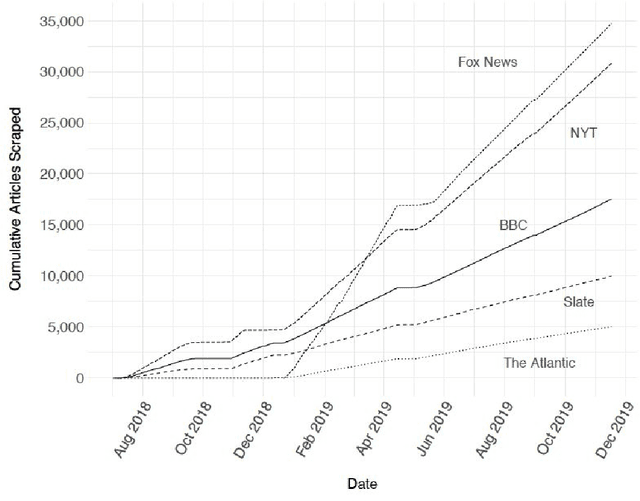
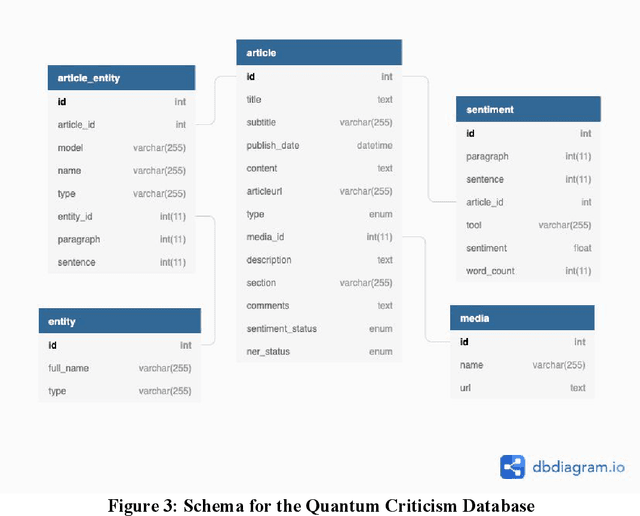
Abstract:In this research, we continuously collect data from the RSS feeds of traditional news sources. We apply several pre-trained implementations of named entity recognition (NER) tools, quantifying the success of each implementation. We also perform sentiment analysis of each news article at the document, paragraph and sentence level, with the goal of creating a corpus of tagged news articles that is made available to the public through a web interface. Finally, we show how the data in this corpus could be used to identify bias in news reporting.
 Add to Chrome
Add to Chrome Add to Firefox
Add to Firefox Add to Edge
Add to Edge